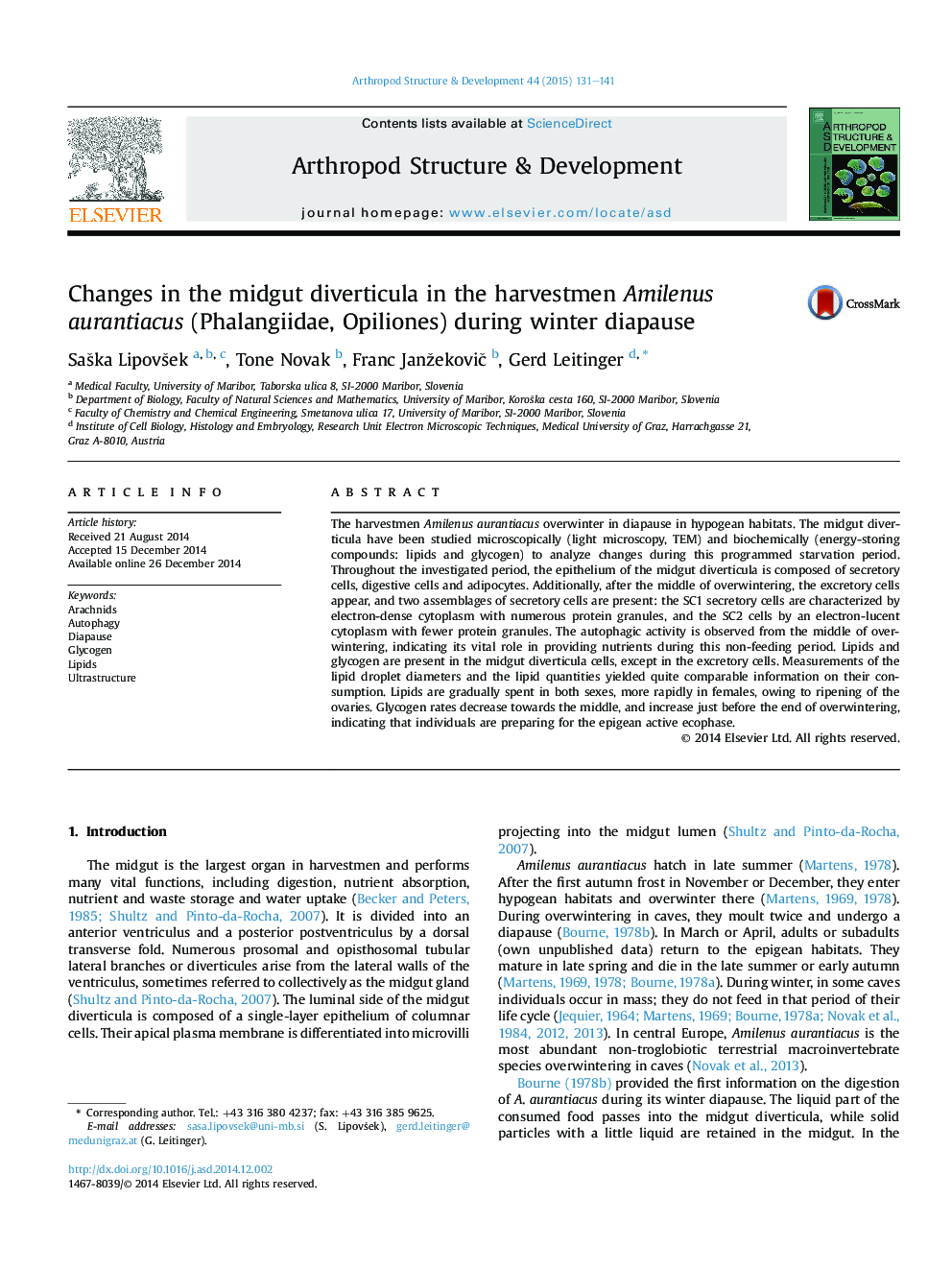| Article ID | Journal | Published Year | Pages | File Type |
|---|---|---|---|---|
| 2778628 | Arthropod Structure & Development | 2015 | 11 Pages |
•The harvestmen Amilenus aurantiacus overwinter in diapause in hypogean habitats.•The midgut diverticula always consist of the secretory and digestive cells and adipocytes.•The excretory cells and two subtypes of the secretory cells appear from January on.•Lipids are the main energy storing compounds during this programmed starving period.
The harvestmen Amilenus aurantiacus overwinter in diapause in hypogean habitats. The midgut diverticula have been studied microscopically (light microscopy, TEM) and biochemically (energy-storing compounds: lipids and glycogen) to analyze changes during this programmed starvation period. Throughout the investigated period, the epithelium of the midgut diverticula is composed of secretory cells, digestive cells and adipocytes. Additionally, after the middle of overwintering, the excretory cells appear, and two assemblages of secretory cells are present: the SC1 secretory cells are characterized by electron-dense cytoplasm with numerous protein granules, and the SC2 cells by an electron-lucent cytoplasm with fewer protein granules. The autophagic activity is observed from the middle of overwintering, indicating its vital role in providing nutrients during this non-feeding period. Lipids and glycogen are present in the midgut diverticula cells, except in the excretory cells. Measurements of the lipid droplet diameters and the lipid quantities yielded quite comparable information on their consumption. Lipids are gradually spent in both sexes, more rapidly in females, owing to ripening of the ovaries. Glycogen rates decrease towards the middle, and increase just before the end of overwintering, indicating that individuals are preparing for the epigean active ecophase.
